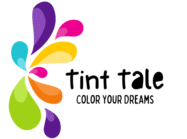A Guide to Better Color Art
Are you looking to bring your artwork to life with bold, beautiful colors? Mastering the art of coloring is more than just staying inside the lines — it’s about blending, contrast, color choice, and creating emotion through your palette. Whether you’re using pencils, markers, or digital tools, these tips will help you color more effectively and confidently.
Let’s dive into some essential coloring tips for vibrant, professional-looking results.
🎨 1. Choose the Right Color Palette
Start with a harmonious color palette. Use the color wheel to explore complementary, analogous, or triadic color schemes. Having a cohesive set of colors will make your work more visually pleasing and impactful.
Pro tip: Try limiting your palette to 3–5 main colors for balance and unity.
🌈 2. Layer Colors to Add Depth
Don’t settle for flat color. Layering different shades can add richness and texture. Start with a light base and gradually build up darker tones. This technique is especially useful with colored pencils, markers, or watercolors.
Example: For a vibrant green, start with yellow and layer blue on top.
✍️ 3. Use Light and Shadow
Learning how to add light, highlights, and shadows will make your coloring more realistic and dynamic. Identify your light source and shade accordingly. Use lighter tones for highlights and deeper colors for shadows — not just black!
SEO Tip Keyword: how to shade in coloring
💧 4. Blend Smoothly
For a professional look, practice smooth color transitions. Use blending tools like:
-
Blender pencils (for colored pencils)
-
Alcohol markers (like Copic or Ohuhu)
-
Water brushes (for watercolor pencils)
Smooth blending avoids harsh lines and gives your colors a polished feel.
🖍️ 5. Experiment with Color Contrast
Contrast creates visual interest. Don’t be afraid to place warm colors (reds, oranges) next to cool colors (blues, greens). Use contrast to draw attention to key areas and make elements pop.
SEO Keyword: how to color with contrast
🧠 6. Understand Color Psychology
Colors evoke emotions. Learn the basics of color psychology to match your art’s mood:
-
Red – passion, energy
-
Blue – calm, trust
-
Yellow – happiness, optimism
-
Purple – creativity, magic
This helps you create more intentional and emotionally resonant artwork.
🔍 7. Pay Attention to Paper Quality
Yes — your paper matters! High-quality, thick, and smooth paper absorbs color better and allows for better blending. Thin or low-quality paper may bleed or tear when layering.
🧪 8. Test Before You Color
Always test your colors on a separate sheet before applying them to your final work. This helps avoid surprises, especially when working with mixed media or blending new shades.
🧵 9. Add Texture and Detail
Use cross-hatching, stippling, or gentle strokes to add texture. This works great for things like fur, fabric, or nature scenes. Details can bring your art to life and keep it from looking too flat.
🌟 10. Practice and Be Patient
Great coloring takes time. Don’t rush the process. Allow yourself to explore different styles and tools. The more you practice, the more confident and creative you’ll become.
Final Thoughts: Color with Confidence
Coloring is more than a hobby — it’s a form of expression. With the right techniques, you can turn a simple coloring page or artwork into something truly unique and vibrant. Use these tips as a foundation and keep experimenting to find your personal style.
